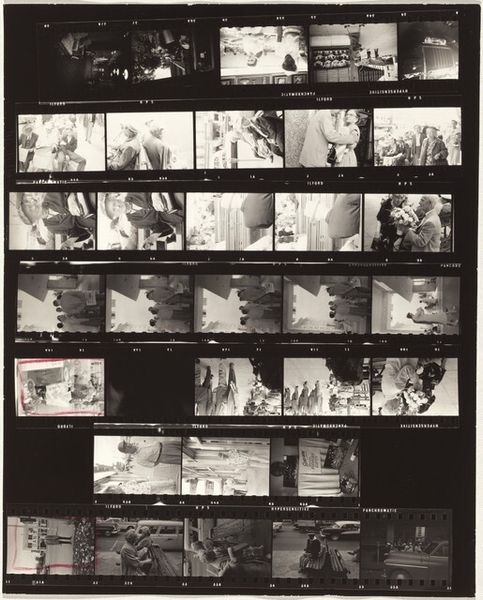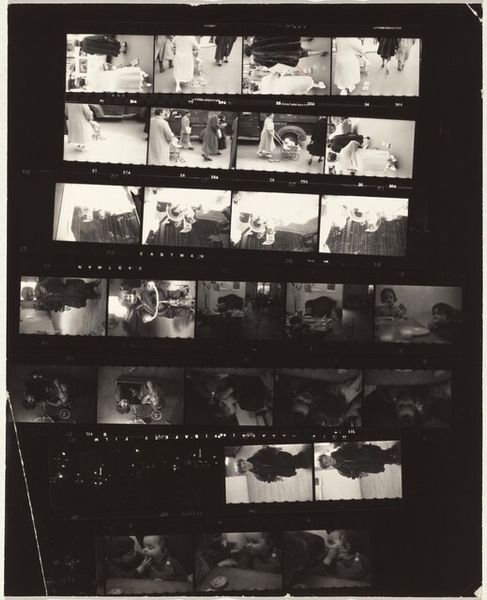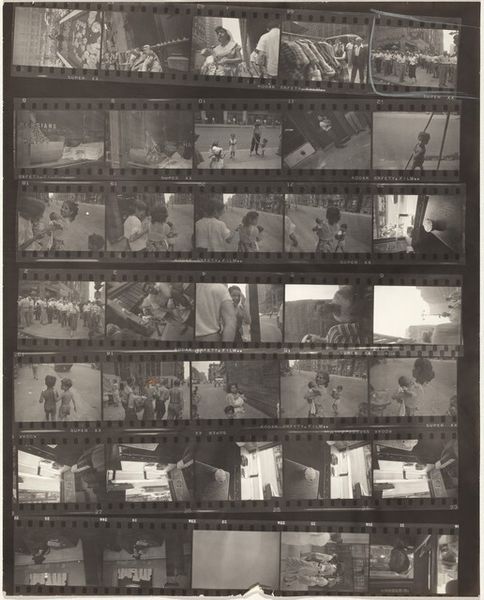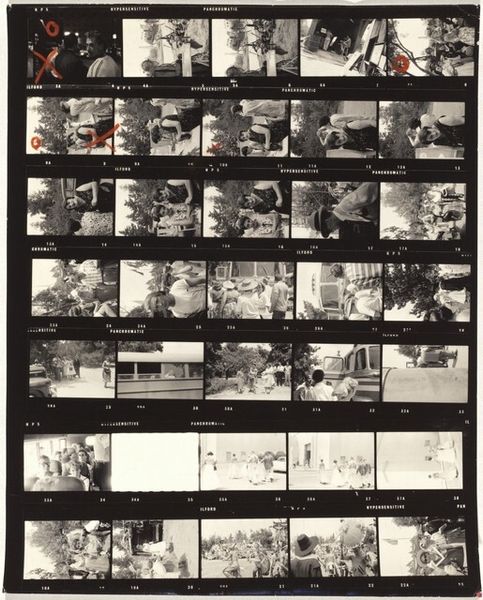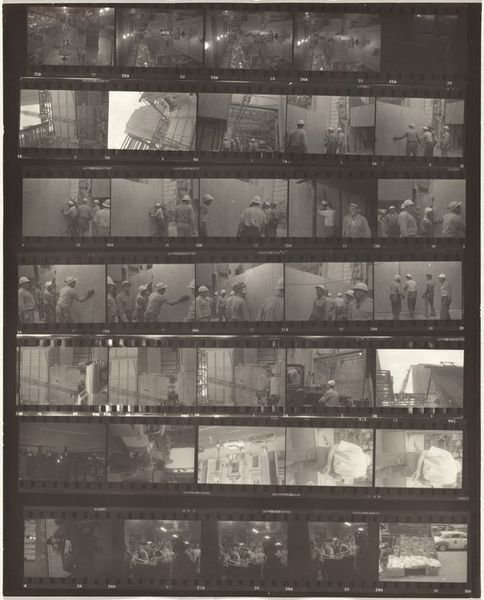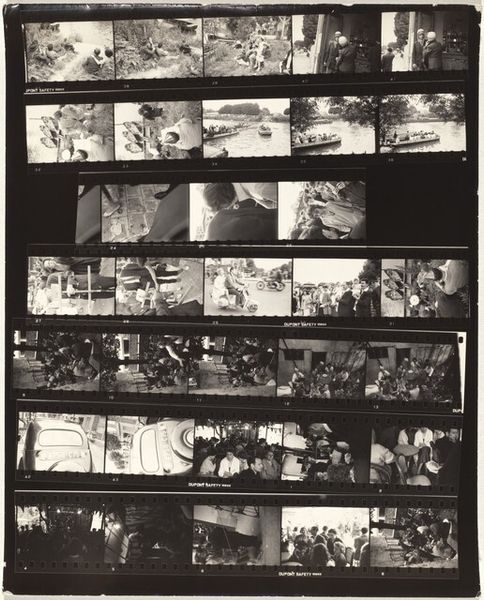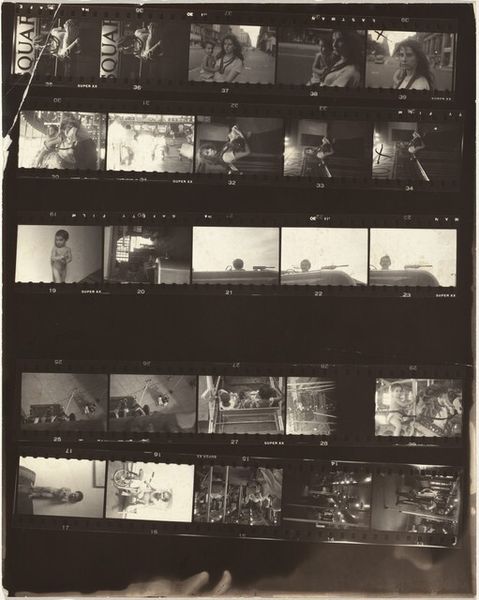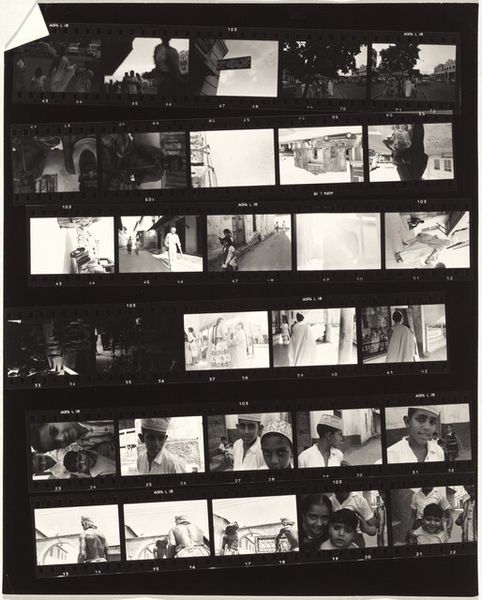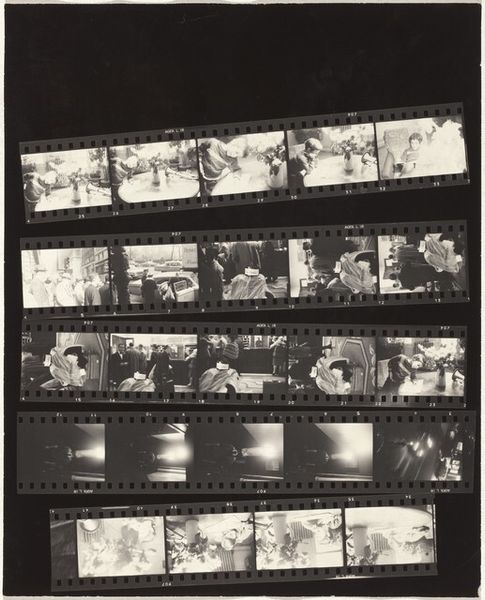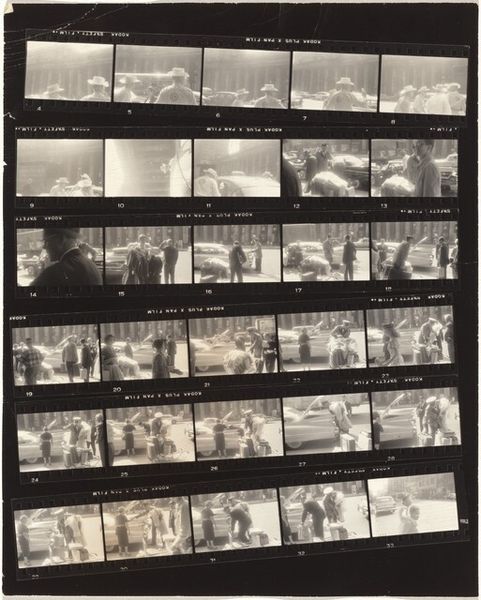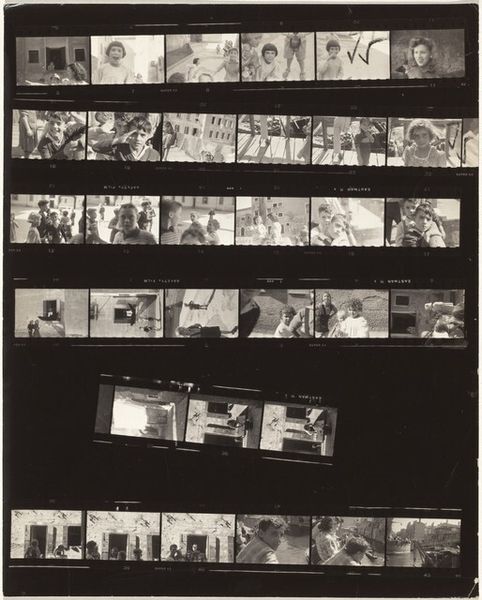
photography, gelatin-silver-print
#
film photography
#
asian-art
#
landscape
#
street-photography
#
photography
#
group-portraits
#
gelatin-silver-print
#
monochrome photography
#
realism
#
monochrome
Dimensions: sheet: 25.3 x 20.3 cm (9 15/16 x 8 in.)
Copyright: National Gallery of Art: CC0 1.0
Editor: Here we have Robert Frank's "Chinese festival--New York City no number," a gelatin silver print from 1954. What strikes me is that we're looking at the film strip itself. It feels very raw and immediate, like we're seeing the artist's process laid bare. What catches your eye? Curator: For me, this work screams materiality. Frank's choice to present the contact sheet, complete with sprocket holes and frame numbers, subverts the traditional photographic print as a pristine, untouchable object. We're confronted with the labor involved: the rolling, the developing, the selecting. How does this presentation affect our understanding of the images themselves, these snippets of a Chinese festival and a child playing with a ball? Editor: It's like he's revealing the guts of the creative process, not just the final product. Does that undermine the artistic value, or does it enhance it? Curator: It challenges it, definitely. By showing us the discards alongside the possible "keepers," Frank democratizes the photographic process. It suggests that value isn't inherent in a single perfect image, but rather emerges from the act of selection and framing, both literally and figuratively. What does this say about the value we place on labor? Is the photographer elevated as the sole creator, or is he just a highly skilled worker? Editor: I never considered the ethics of labor in street photography. How much control did Frank have over capturing that festival? I guess there's an element of chance in that type of documentation. Curator: Precisely! He captures but does not orchestrate, suggesting he is like a skilled factory worker repeating tasks in the photographic production line. Frank lets chance be his fellow worker and challenges established assumptions and boundaries between artist and laborer. Ultimately it brings the art closer to the real experience of creation and daily life, as opposed to an ideal that would seem unrealistic. Editor: I like how it humanizes both the art and the artist. The finished product, often seen as a rarefied artifact, can obscure the real work that went into making it. Thank you! Curator: Thanks, I learned to never underestimate what a filmstrip is hiding under the perfect surface!
Comments
No comments
Be the first to comment and join the conversation on the ultimate creative platform.
